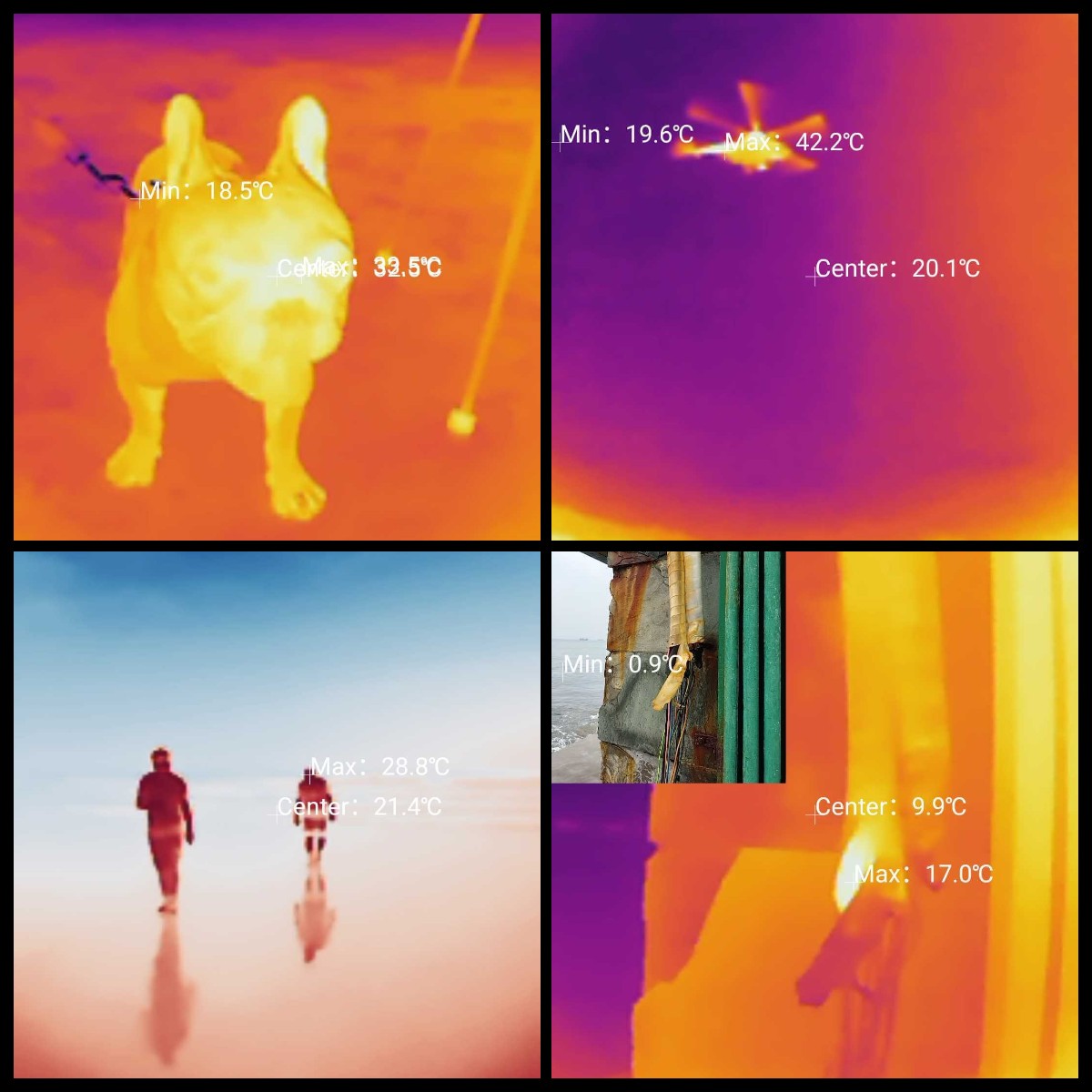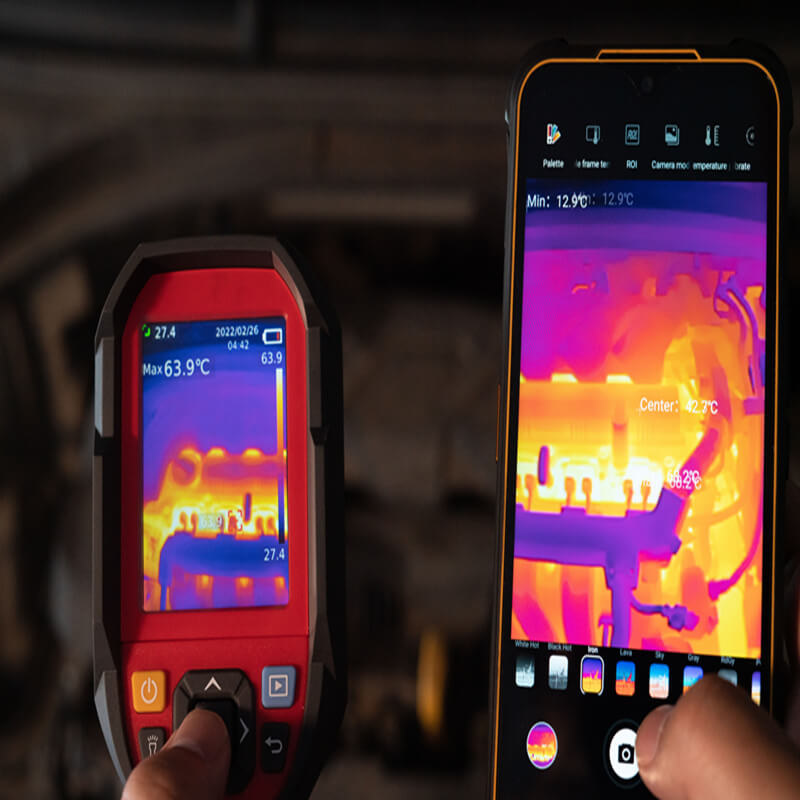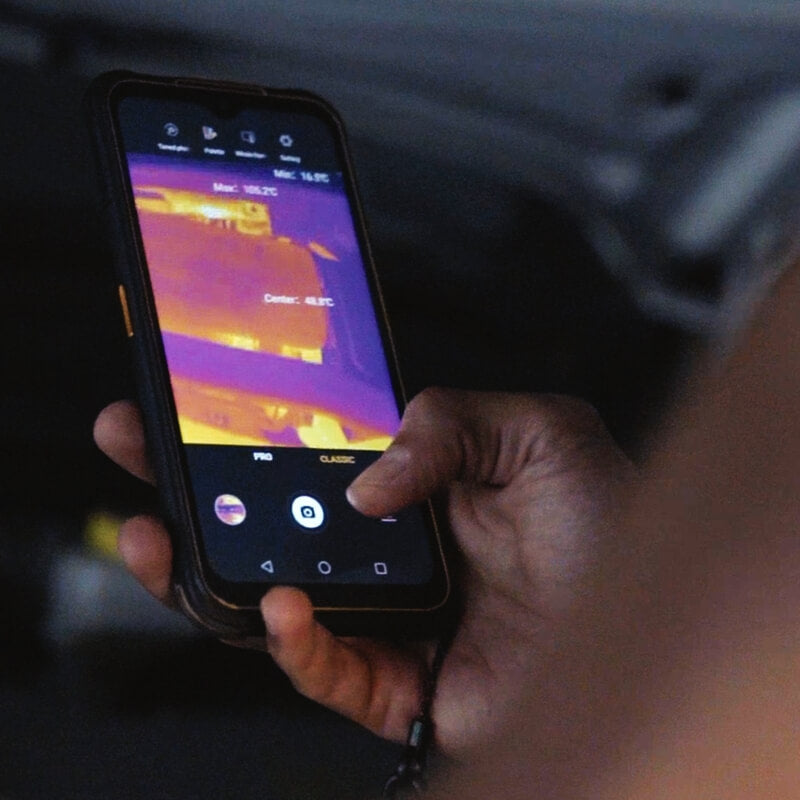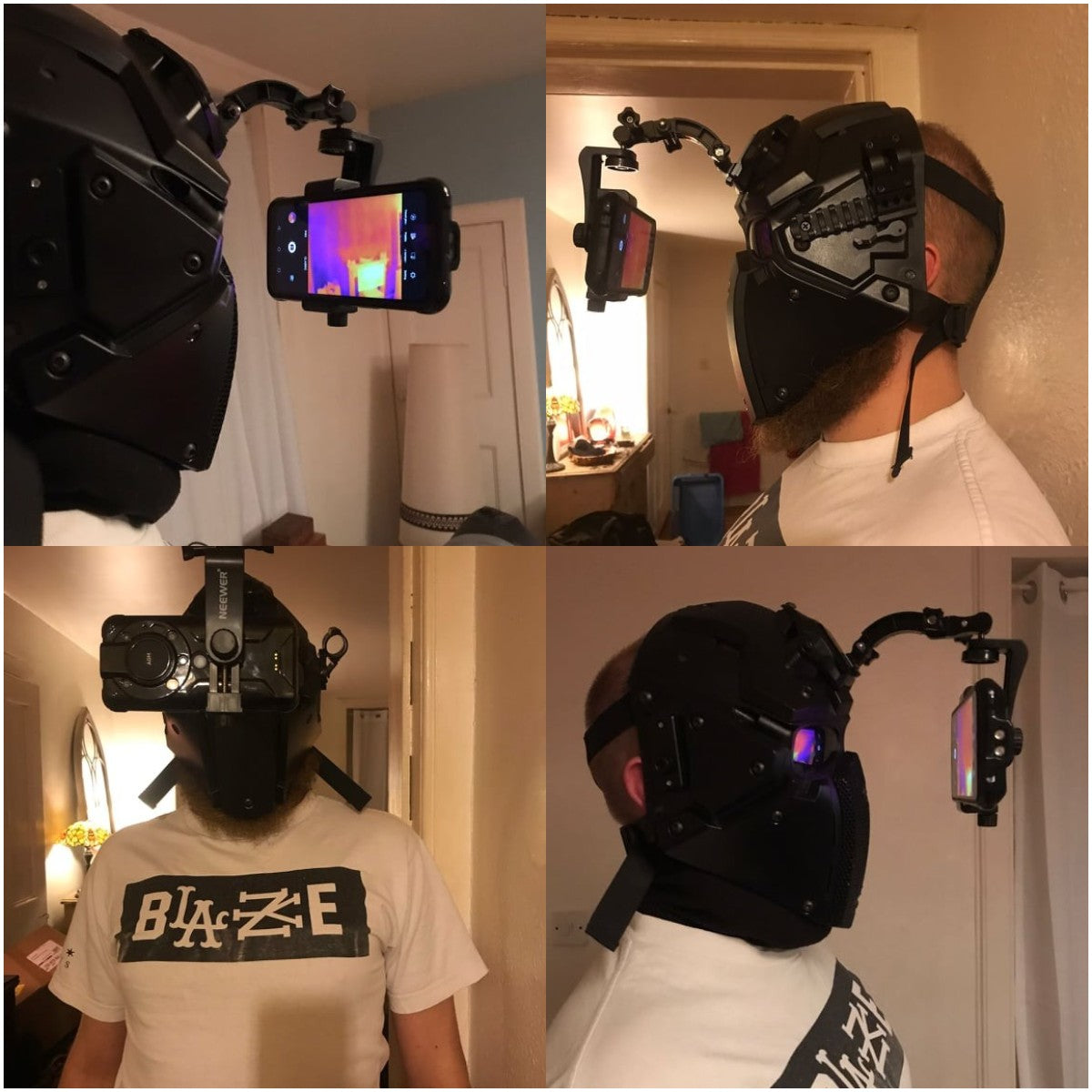AGM FANS STORY

AGM FANS STORY
Thermal Imaging: Why does every thermal imager have low resolutions.
When looking a photo, it is usually seamless. However, that’s not true. I believe everyone knows that fact that, if you magnify a photo lots of times, it eventually becomes blurry. What once clear became color blocks, and objects seem indistinguishable. There is usually a limit until you see the color blocks. Such limit is the photo’s resolution.
Right click the file, and check the property. The digits on resolution are usually around millions. However, if we take a look at the resolution of a thermal imaging camera, It’s usually around thousands. The Glory Pro and the Glory G1S’ thermal imager both has a resolution of 192 * 256.
If we do the math, the answer is 49,152. Let’s check the resolution of an ordinary 4K photo. 4096*2160, equals to 8,847,360. The difference is almost immense.
This is the picture, it is made of small pixels.
Pixels are the basic building blocks of this picture. They are single colored squares. A 48 MP photo was built around 48 million pixels. I suppose everyone of you has a phone, and you all understand how small the phone camera is. The structure of the cameras in your phone are truly brilliant, because they built 48 million small sensors in a platform which smaller than your thumbnail.
How does that related to the thermal imager?
Hold your horses, here we are.
Camera sensors were built to detect visible light. The thermal sensors were built to detect invisible far infrared rays. Infrared rays are electromagnetic waves which have longer wavelength than visible light. This is why thermal sensors are much larger than normal camera sensors.
Normally an average camera sensor is 1-2µm and an average thermal sensor is 12-17µm.
Hence it is almost 10 times larger, it is extremely difficult to put a high resolution thermal camera inside a smartphone. The Glory G1s, has a resolution of 192*256, more than forty thousand thermal sensors integrated in a very small space.
Therefore, it is possible to make a high resolution thermal imaging device, but there is always a but. Before you buy such device, you need to prepare a lot of much and a very big space. It will certainly be big and expensive.

AGM FANS STORY
How 25 Frames Per Second Make the Thermal Imaging Cinema Grade
Every time when you walk into a cinema, you will always see moving images instead of still pictures. However, what if we slow movies down? Will they still look continuous?
Two hundred years ago, a British scientist from the royal institution P. M. Roget discovered the phenomenon of visual persistence. When you look at a spinning wheel, the iron structures made a the movement seem still. Every image received by the human eyes will stop in the neural system for around 0.1 - 0.4 second.
Later, filmmakers discovered if we see through many continuous images within a short time, the image starts moving. That comes films we all love today. Early filmmakers also discovered a magical number, 24.
If we play these images at a minimum of 24 within a second, the image starts to move. This is how cartoons were made. Early cartoonists drew 24 movements of a cartoon character and spin these these pictures in a wheel real fast. Audiences just needed to wait for a few seconds until miracle happened. The character became animated, and it seemed alive.
What does it mean to us, to the Glory Pro, or to Glory G1s Thermal imager?The thermal imager has a frame rate of 25hz, meaning the imager takes 25 pictures or measurements every second if you shoot a video.
However, the thermal imager is not pleasure video device, but a professional inspection device. 25 Hz for professionals means every sensor measures the heat 25 times a second, giving a more accurate real-time inspection.
A quick reacting thermal imager will help you understand the circumstances quickly. It also follows your movements. if the frame rate is too low, the image will not follow the movement.
Because some part of your movement may not be captured by the sensors.
Higher Frame rate also means accuracy. think about it. The thermal imager has more than forty thousand sensors, and they all measures 25 times every second. It means the imager will send more than a million data for analysis.
The concept of frame rate means different things in thermal imaging and videographies. But it is nothing bad to have an imager with higher frame rate.

AGM FANS STORY
Three tips AGM AGM Glory G1S’s Thermal Imaging Camera Users
AGM Glory G1S’s thermal imaging is a powerful function, helps our users deal with different situations, such as industry situations, forestry, and daily usage. For example, an infrared thermometer is not the best option when doing temperature checks for pipes or electronic devices. It can only check the temperature in a small area. Glory’s thermal imaging boosts efficiency for temperature checks.
Because a thermal imaging device can instantly provide you with visual information about temperature differences. It has similar accuracy to infrared thermometers, which will shorten your working time.
Although AGM Glory G1S has the most powerful thermal imaging device in the phone market, there are still things you can do to improve your function.
Shape measurement
As mentioned in the above paragraphs, thermal imaging devices give you instant visual information about temperatures. However, it gives you the temperature of the entire picture. It is hard to distinguish the temperature of each object in the scene.
Ease your worry now! We have thought about it! On AGM Glory G1S, you can draw shapes like circles, squares, rectangles, or even a line. Tap Pro, and tap ROI on the top menu. Then you draw shapes, lines, and points. It will tell you the maximum, minimum, and average temperature within the shape. If it is a line, then the screen will show the corresponding temperatures across the line.
(This video introduces how to measure temperatures in certain area)
Color mode
Glory Pro can present the temperature in a fast and accurate fashion. It usually shows the temperature in two colors to represent their differences. For example, under the white-hot mode, brighter objects are hotter and dark objects are colder. However, the white-hot mode may not be the best choice for every situation. It only shows black and white. It is a great tool under darkness because it will show you objects in front of the camera. However, the problem is the white-hot mode does not show too much temperature difference. The Iron mode has a greater variety of colors.
It uses blue and purplish colors to represent cold objects in the environment. Red colors represent the ambient temperature, and the hottest objects are presented yellow like a piece of melting iron. The iron mode has a clearer presentation of temperature, hence it is good at monitoring temperature. We also designed different color modes for more situations. Tap pallets, there are many options, like grey, sky, lava, etc.
(This video introduces how to change color palletes.)
Emissivity
Since the Glory Pro did not directly attach to the object, it may not always be accurate for every measure. The thermal imaging device captures the heat radiations emitted by the object. However, although radiation gives us information about the temperature of an object, different materials do it differently. The heat radiation of water is significantly different from the heat radiation of metal, even if it has a similar temperature. Therefore, an accurate temperature measurement needs the user to adjust our device according to the object.
(This video introduces how to adjust the emissivity and make measurement more accurate.)
In the thermal imaging app, tap temperature parameters. You will be able to adjust your current emissivity. Adjust it according to the object you are measuring, and it will give you a more accurate result.

AGM FANS STORY
Hunting White Rabbit when Snow, a Glory Pro User Story.
Rabbits are wild delicacies for many hunters, but it does not come easy. The species’ mastery in escape often left hunters nothing but some leftover rabbit hair. However, one man thinks otherwise. Norton, a British crossbow hunter, managed to make rabbit hunting much easier with his Glory Pro.
“I was originally looking at the Glory SE, but I always wanted an infrared night vision camera. Then I saw the Glory Pro.” Said Norton.
The price tag of Glory Pro is not a cheap expense in Norton’s budget. People around him question his choice, but Norton’s thought prevails. He needs a tough phone at work to deal with the harsh environment every day. Ordinary phones would not survive the drops and dust, so a rugged phone is the only choice.
“I don’t use the thermal imaging and infrared camera at work……but I always wanted one.” Even saying so, the Glory Pro still serves his life after work. Norton is a hunter who specialized in crossbow, and the thermal imager and infrared night vision camera served well in his other life.
In winter, snow shelters the land. It is the perfect natural camouflage for white rabbits, making them extremely difficult to catch. When the problem gets complicated, Glory Pro seems to be the solution. The temperature in winter is often -17 °C, where phones barely survive. The coldness dysfunctions many LCD screens and decays the vitality of lithium-ion. Glory was designed to survive the cold; its tightness and the cold-resistant battery showed a great performance against the cold.
While everyone else was stretching their eyes trying to see the rabbit, the infrared night vision camera and the thermal imaging camera killed the game. The white rabbit appeared red under the thermal imager’s iron filter, and the snow was blue. Norton even bought an infrared torch to enhance the infrared night vision experience.
In the end, Norton shared a picture of a mask made of his own. Placing the Glory Pro at the front, you will have new goggles.
“People questioned the price tag, but a night vision goggle on its own costs around 400 to 500 pounds. I need a new phone, so that’s not much of a choice.”







